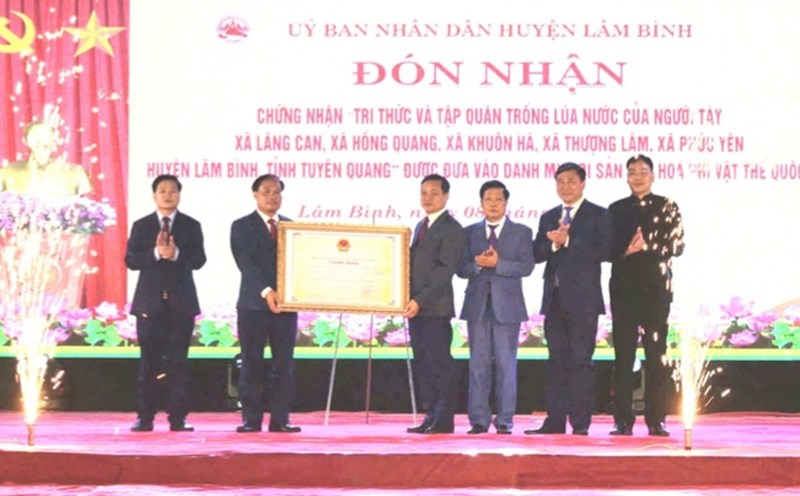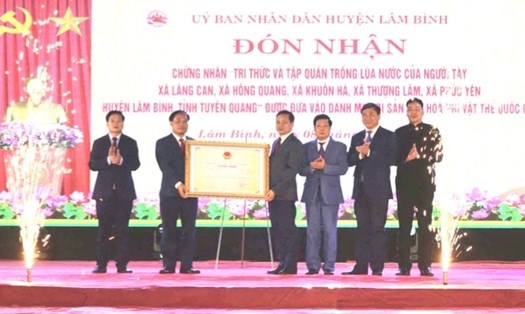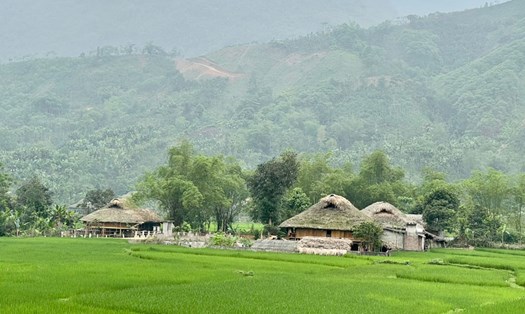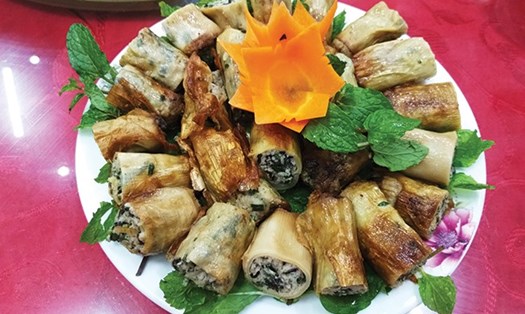Nghia Do commune is the place of residence of the Tay ethnic group in Lao Cai. Along the poetic Nam Luong River, in daily life and production, the people here have a culture imbued with national and regional identity, from culinary culture to traditional crafts.
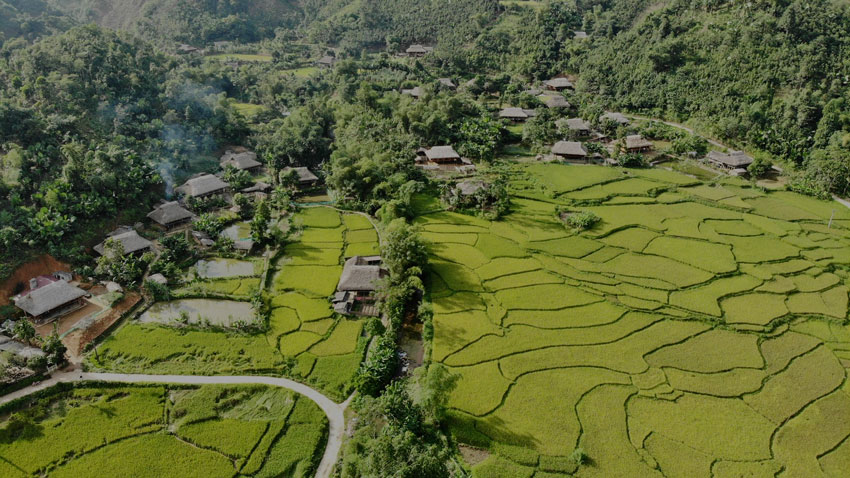
Recently, the Ministry of Culture, Sports and Tourism has just appraised and inscribed 2 intangible cultural heritages of Lao Cai province in the National Intangible Cultural Heritage List; including the heritage type belonging to the first culinary group of Lao Cai, which is "Folcal culinary practice of processing grilled fish, squid duck and leafy wine of the Tay people of Nghia Do commune".
According to Mr. Duong Tuan Nghia, Deputy Director of the Department of Culture, Sports and Tourism of Lao Cai province, the cuisine in Nghia Do is highly appreciated for its uniqueness from the ingredients, process, way of making dishes, principles when enjoying on the tray...
Dishes in Nghia Do are made from local foods such as squid ducks, which are green-necked squid ducks with a neck hanging, a chubby body, a big head, and short legs. This type of duck has a fragrant, delicious quality of meat that is only available in Nghia Do.
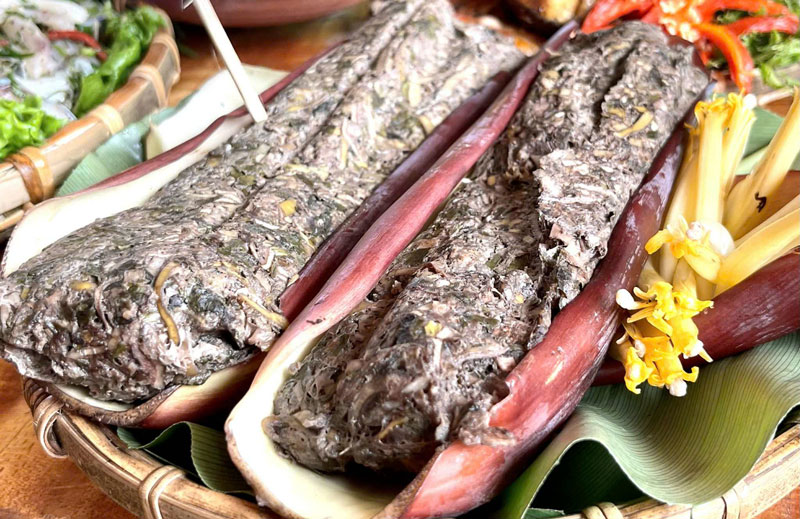
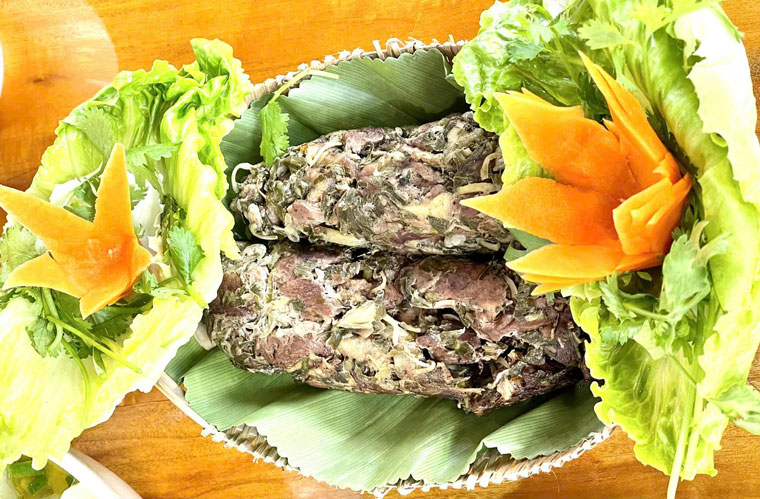
Although it is just a daily rustic dish, the blah boy duck still follows the monk's and chives philosophy in culinary art. After using a meat knife, cutting into pieces (Kim), the food is cooked in bamboo tubes (Moc) with water in the bamboo tubes or from the water of the stream (Thuy), using a small flame (Mars), on the ground in the mountains and forests (Tho). In addition, the duck meat will be mixed with spices and herbs, marinated for about 15-20 minutes until the meat is absorbed with the spices.
When putting the duck meat package in the bamboo rat rat rat rat rat, the processor will use dong leaves to cover the bamboo rat head and put it on the stove. In addition, to make the dish more flavorful, the Tay Nghia Do people skillfully use local spices combined with duck meat such as Doi seeds, mac Khen, chives, herbs in the home garden, ginger, lemongrass, chili... The lam broth is grilled for about 30-40 minutes to cook and can be enjoyed.
Next is the two- host grilled fish dish, an unforgettable delicious dish in the Tay ethnic group's rice tray. To have delicious grilled fish cakes, the Tay people of Nghia Do commune often choose the ingredients as natural fish from rivers, streams, and ponds.
These are carp, floating fish, and perch weighing 1.5 kg or more. When caught, the fish are chopped, the scales are cleaned, the pair is sliced and then cross-sliced to create pieces about 5-7 cm thick and 15-20 cm long.
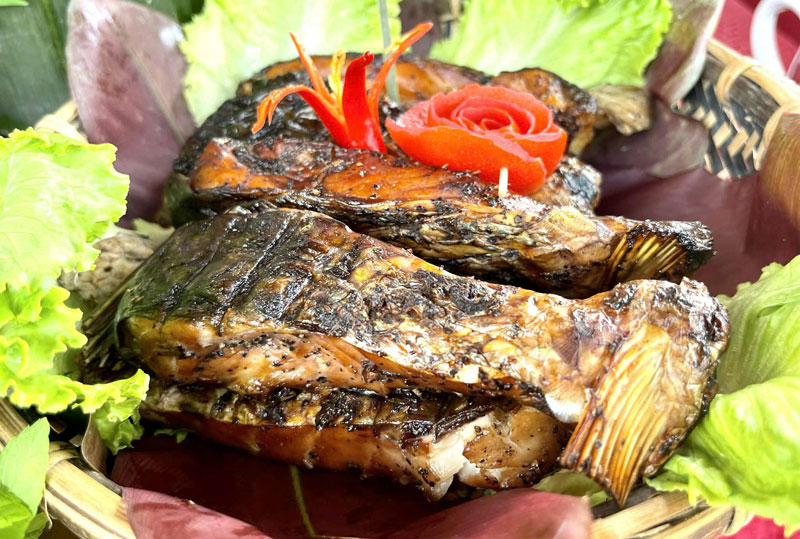
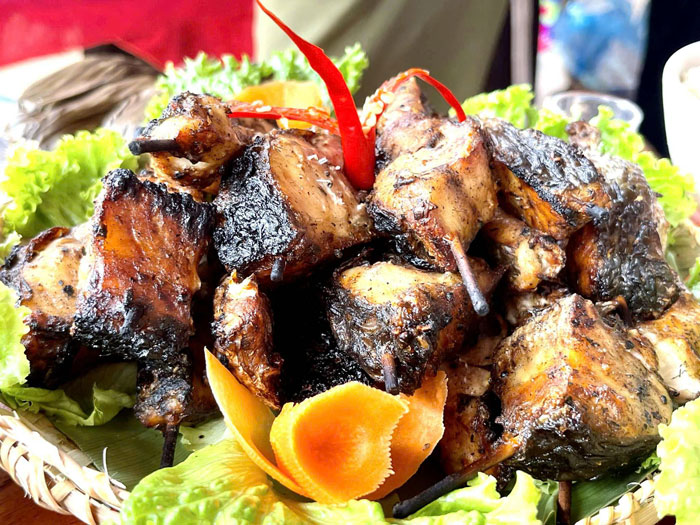
After cutting, let the fish drain the water, then mix the spices. Spices for fish marination include pancakes, Doi seeds, salt, ginger leaves, lemongrass, and herbs in the home garden. All are crushed and marinated with fish for about 20 minutes until the spices are absorbed evenly. Use a small bamboo stick, splash a skewer end along the fish piece to create a straight surface for the fish piece. Then use bamboo sticks to clip the fish skewers into a large fish clip to grill.
The difference in this dish compared to other grilled fish dishes is that it is grilled twice a day. The first time, the fish clips were stopped next to the fire, not too close, not too much coal. The second grilling will determine the ripeness and deliciousness of the fish because this time the fish will be grilled near meals.
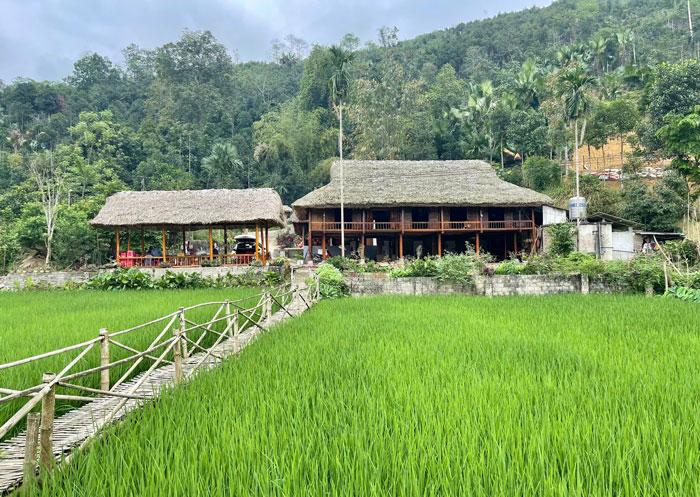
The daily meal of the Tay ethnic group is always attractive, unique and colorful, expressing traditional culture such as five-color sticky rice, two-feed grilled fish, steamed duck, stir-fried duck, bitter soup...
In particular, each season, the Tay people's rice tray will have its own unique dishes. Therefore, to fully enjoy other attractive cuisines of the local people, visitors will have to visit many times.
Lao Cai currently has 56 intangible cultural heritages inscribed in the National Intangible Cultural Heritage List, 3 representative intangible cultural heritages of humanity; is the leading province in the country in terms of the number of intangible cultural heritages.
Currently, the whole province is actively preserving, cultivating, promoting cultural values, turning heritage into assets to help ethnic minorities escape poverty.
In Nghia Do, in 2024, the number of visitors will reach 25,000, with revenue from community tourism of about 15 billion VND. International visitors have also begun to learn about the lives of the Tay people to "touch" the land of original and genuine identity.

